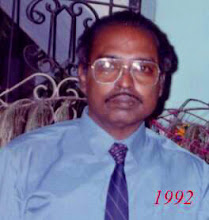
Sons and Lovers [1913]
D.H. Lawrence
[There is no end to world’s list of best books. This blog is an attempt to list, summarize and review all that is best in the world of books. Some, like Paulo Coelho’s The Alchemist made history by being translated into 62 languages, sold worldwide, and read by millions. Books like Gone With the Wind is read by successive generations since 1936. What qualified a title to be included in this blog, a reader may ask. Mere quantitative print out put or money earned by the author is not the criteria. Hemingway’s Old Man and the Sea may not be translated into many languages; it might not be sold in millions as is the case with Dan Brown’s Da Vinci Code; but its enduring message and the story-telling technique earn a place here. A different blogger may hit upon a totally different set for reasons other than those I preferred.
Sons and Lovers, regarded as D.H. Lawrence’s masterpiece stands ninth in the list of one hundred best fiction titles drawn by the Publishers Guild. One wonders whether it is a novel or perhaps even a long short story. Because the reader has a feeling that
Sons and Lovers is an epic tale of an English family and its relationships to each member. It highlights the mythic of conflict between a mother and her son, a recurring theme in western myth and religion. It is the famous psychologist Sigmund Freud who first postulated that fathers are antagonists to their sons, while the sons themselves are bonded to their mothers. To Freud mother is the object of desire in her son’s psyche. This is the so-called Oedipus complex. Mother is at the heart of all conflicts in most mythological stories, and she is the ultimate threshold guardian to the hero’s guarded entry into a higher plane of consciousness and wisdom.
Keeping Oedipus complex at its base Sons and Lovers tells us the story of its hero, Paul, and his relationship with his mother. Paul is hopelessly devoted to his mother, and their love often borders on romantic desire.
Storyline
Sons and Lovers is set in the small coalmining town of
Miss.Gertrude Coppard meets a rough and muscular miner, by name Walter Morel, at a Christmas dance and falls head over heels in love. But soon after her marriage to the miner she realizes the difficulties of living off her husband’s meager salary in a rented house. The couple often fights and Walter, after a day’s work, retreats to the bar and takes to drinking. Gradually, Mrs. Morel's affections shift to her sons, beginning with the first son, William. As a boy, William is so attached to his mother that he doesn't even enjoy the company of friends or outdoor life. As he grows older, he defends her against his father's occasional violence. Eventually, he leaves home for a job in
Paul works in a surgical appliances factory. As a result of working in the factory, he falls sick and is nursed back to health by one Miriam Leivers and he falls in love with her. Miriam is a girl of very religious bent of mind. Both share a completely platonic and intense relationship which is at once disliked by Paul’s mother, for she feels that Miriam is trying to steal her son away from her. Paul is afraid to leave his mother though he wants to go out on his own and experience love. The lovers often take long walks and have intellectual conversations about books. Miriam’s intense religious temperament is resented by both Paul and his mother. And Miriam does not like the mother’s over protective attitude towards her son. Time passes by, and Paul reaches his 20’s. Now he is quite passionate and romantic and makes love to Miriam, thus putting an end to his early rapturous innocent relation with her as he does not want to get stuck up in marriage. Paul begins to resist her further advances, and his mother looks down on Miriam. The lovers drift apart.
At work, Paul meets Clara Dawes, a married older woman who has left her husband. But this relationship is also bound to doom as Clara’s husband, Baxter Dawes, one day returns and beats up Paul for having sex with his wife. Paul’s mother is detected with the presence of a tumor and eventually dies only to be remembered by her son. Paul brings about a reunion between Clara and her husband by befriending both of them. Miriam, his first love returns and appeals to Paul to marry her. But he refuses and gets lost in his own inner darkness.
This is a story of a man and his emotional relationship with three women, mostly with his mother, that leads to many catastrophes in their respective lives. At the end he is left alone. The novel is a sad and poignant story of a mother and her son and their relationship that remains intact in the mind of the son even after the mother’s death.
D.H. Lawrence
David Herbert Lawrence was born in Eastwood, Nottinghamshire, in central England. He was the fourth child of a struggling coal miner who was a heavy drinker. His mother was a former schoolteacher, greatly superior in education to her husband.
D.H. Lawrence died in

No comments:
Post a Comment